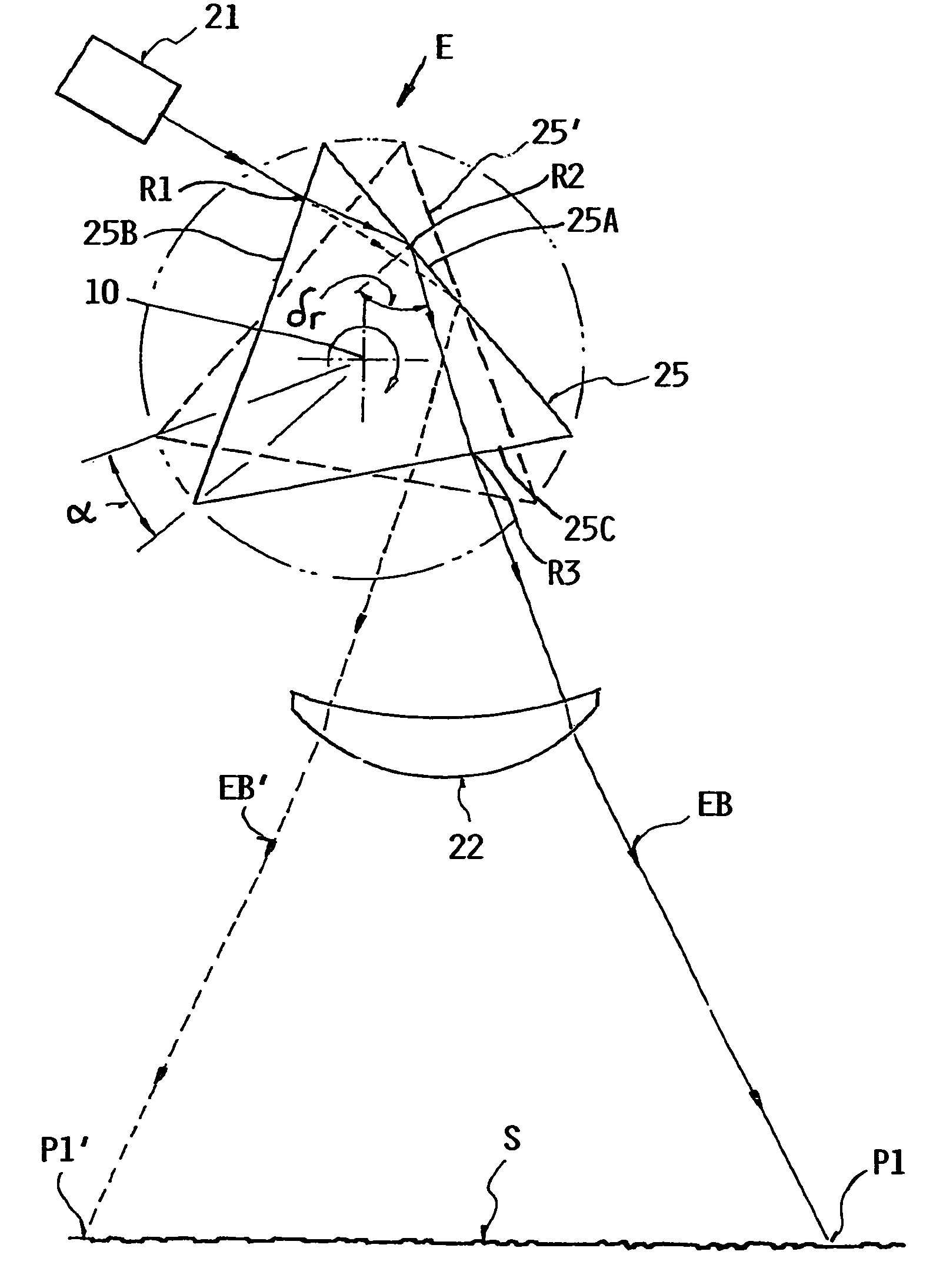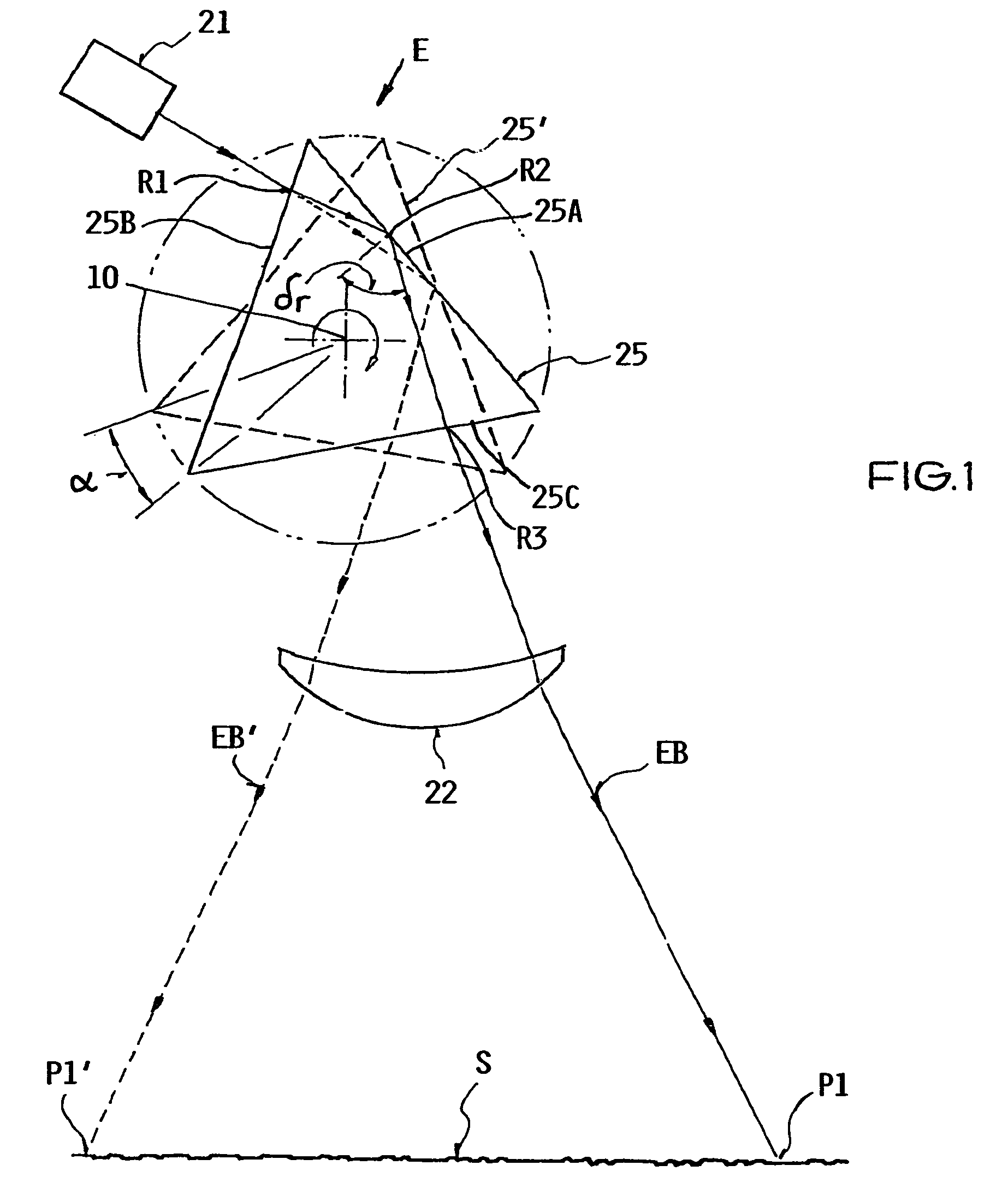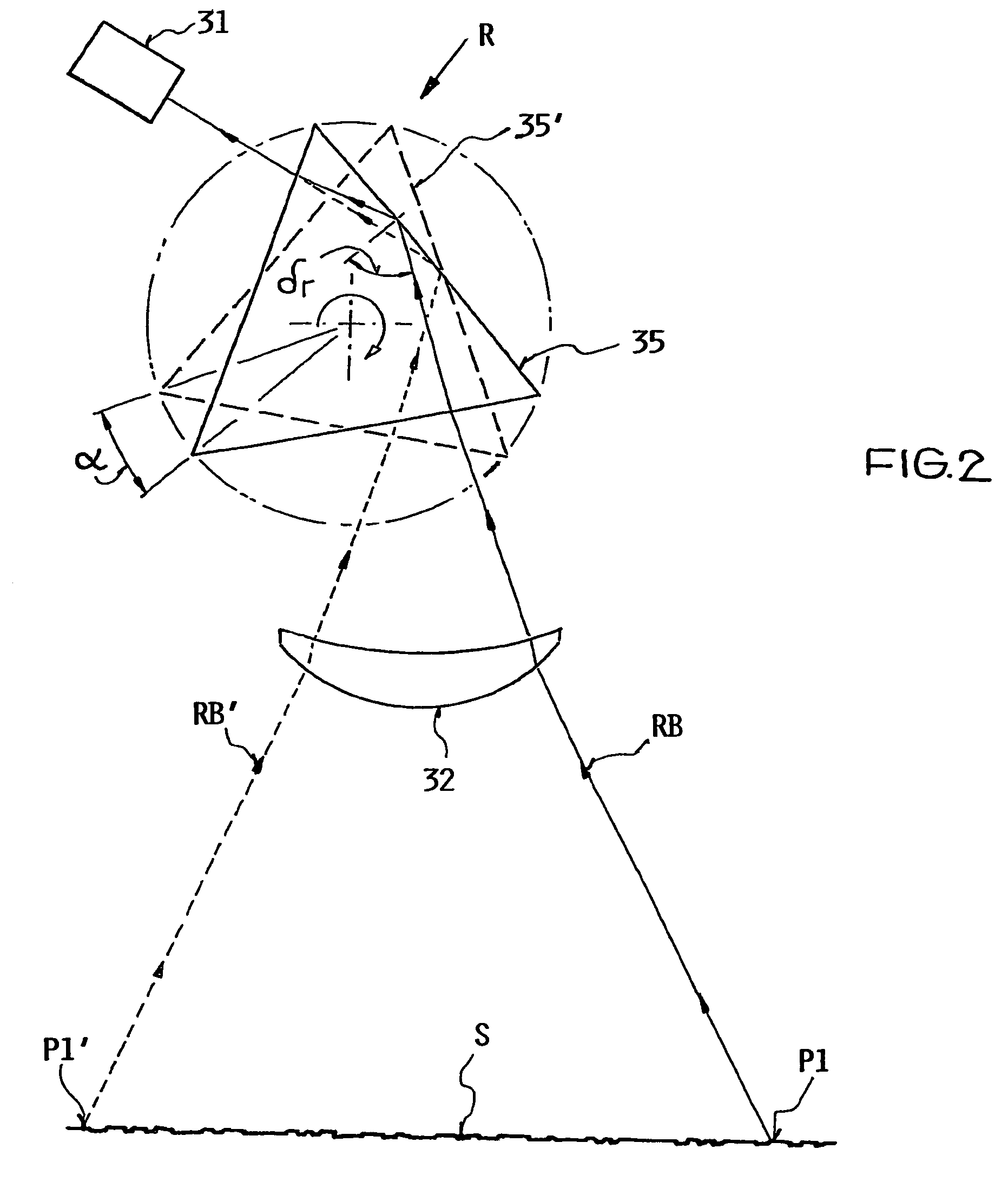Method and apparatus for optically scanning a scene
a scene and optical scanning technology, applied in the direction of instruments, using reradiation, transportation and packaging, etc., can solve the problems of two separate prisms, a substantial structural space for prisms, and a large space for prisms, so as to achieve detection or scanning, production and assembly economic effects
- Summary
- Abstract
- Description
- Claims
- Application Information
AI Technical Summary
Benefits of technology
Problems solved by technology
Method used
Image
Examples
first embodiment
[0029]an optical scanning apparatus according to the invention will now be described in detail with reference to FIG. 1 showing the emitting part E, and FIG. 2 showing the receiving part R, of the overall apparatus. This apparatus can be used for carrying out the general embodiment of the inventive method.
[0030]As shown in FIG. 1, the emitting part E of the apparatus includes a light source 21, for example embodied as an infrared laser diode, a first prism 25 with an equilateral triangular cross-section bounded by three side surfaces 25A, 25B and 25C, and a lens arrangement 22 embodied as a Fresnel lens, for example. The light source 21, which is arranged at a fixed position with a fixed orientation, emits an emitted light beam EB in a direction toward the prism 25. Namely, the prism 25 is interposed in the beam path of the emitted light beam EB, so that the emitted beam EB penetrates into the body of the prism 25.
[0031]Thereby, for example, the emitted beam EB from the light source...
PUM
| Property | Measurement | Unit |
|---|---|---|
| tilt angles | aaaaa | aaaaa |
| tilt angles | aaaaa | aaaaa |
| tilt angles | aaaaa | aaaaa |
Abstract
Description
Claims
Application Information
 Login to View More
Login to View More - R&D
- Intellectual Property
- Life Sciences
- Materials
- Tech Scout
- Unparalleled Data Quality
- Higher Quality Content
- 60% Fewer Hallucinations
Browse by: Latest US Patents, China's latest patents, Technical Efficacy Thesaurus, Application Domain, Technology Topic, Popular Technical Reports.
© 2025 PatSnap. All rights reserved.Legal|Privacy policy|Modern Slavery Act Transparency Statement|Sitemap|About US| Contact US: help@patsnap.com



